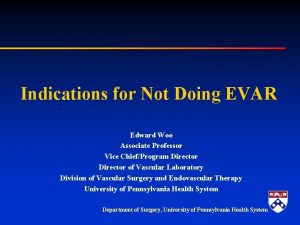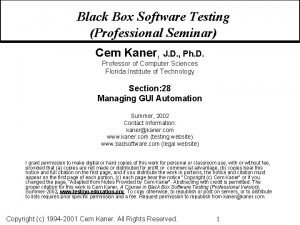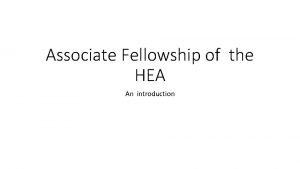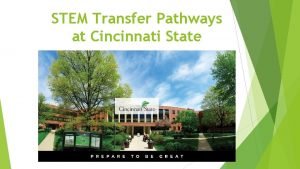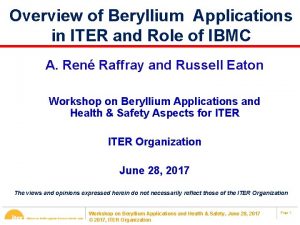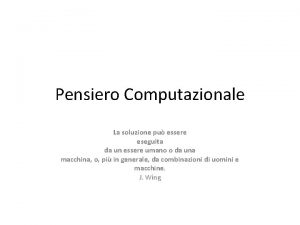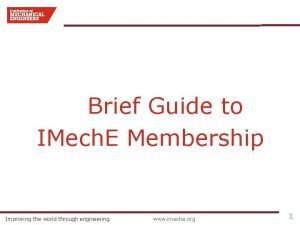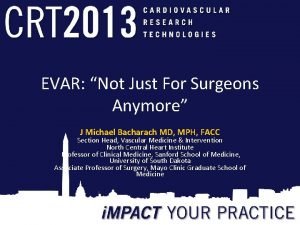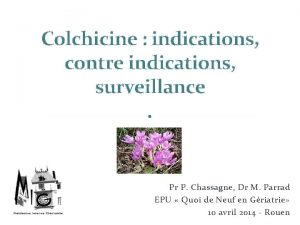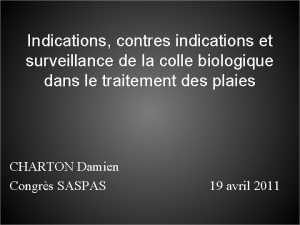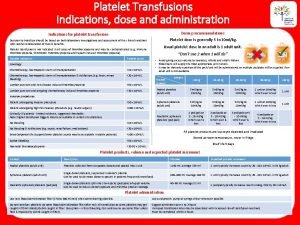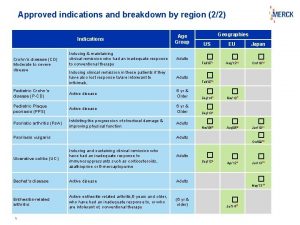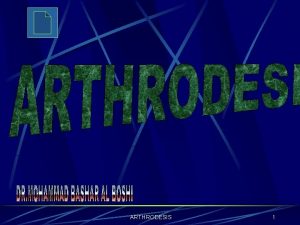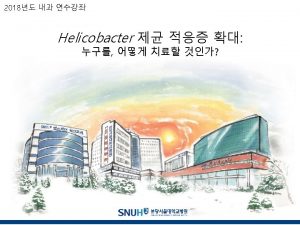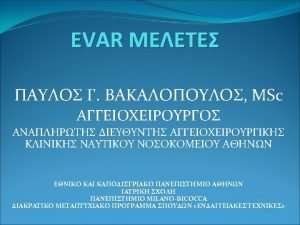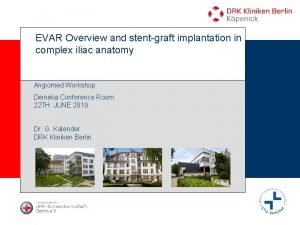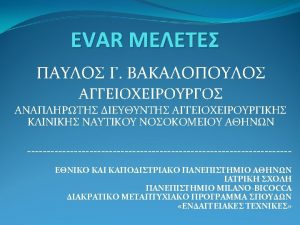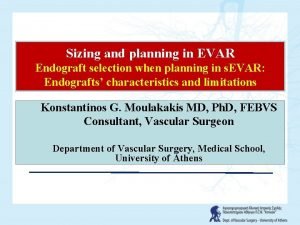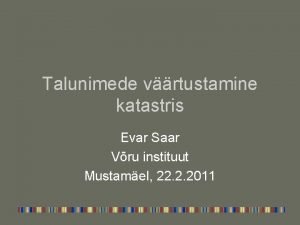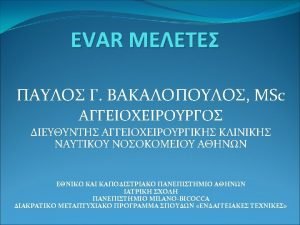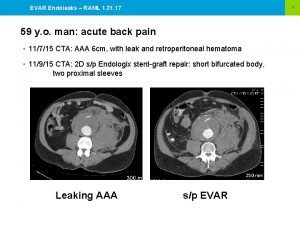Indications for Not Doing EVAR Edward Woo Associate






































- Slides: 38

Indications for Not Doing EVAR Edward Woo Associate Professor Vice Chief/Program Director of Vascular Laboratory Division of Vascular Surgery and Endovascular Therapy University of Pennsylvania Health System Department of Surgery, University of Pennsylvania Health System

Disclosures § Medtronic, Cook, Gore Department of Surgery, University of Pennsylvania Health System

AAA § Affects 5 -9% of men >65 in US – CMS approved screening abd u/s in men >65 § Risk factors – – – FH HTN Chol DM Tobacco Department of Surgery, University of Pennsylvania Health System

Indications for Repair § Rupture § Symptoms § Growth – 0. 5 cm-1 cm/yr § Size – 5 -5. 5 cm – Annual rupture rates » 5 cm-5%; 6 cm-10%; 7 cm-20%; 8 cm-40% » 90% mortality with rupture Department of Surgery, University of Pennsylvania Health System

Open vs Endovascular Repair pros/cons § Open – – Gold standard Long term results No anatomic limitations Comorbidities increase risk-CHF, COPD, CRI (Hertzer et al. J Vasc Surg 2002) § Endovascular (EVAR) – Minimally invasive – Decreased morbidity and mortality – Shorter recovery time Department of Surgery, University of Pennsylvania Health System

Dutch Randomized Endovascular Aneurysm Management (DREAM) Trial Group Decreased mortality with EVAR Prinssen et al, N Engl J Med. 2004 Oct 14; 351(16): 1607 -18

Why ever perform open AAA repair? Department of Surgery, University of Pennsylvania Health System

Indications for Open Repair § Anatomic Constraints – Proximal – Distal – Other § Endoleak – Recurrent sac growth § Infection – Mycotic AAA – Infected Stent graft § Other Department of Surgery, University of Pennsylvania Health System

Proximal-Neck § No neck § Inability to obtain seal – TAAA, suprarenal, juxtarenal § Short neck – <10 mm § Disadvantaged neck – Trapezoidal neck § Inability to maintain seal § Persistent proximal endoleak » >10% change over 10 mm – Thrombus lined – Calcified § Aneurysm sac growth and rupture Department of Surgery, University of Pennsylvania Health System

Neck anatomy preclude EVAR in 64% of pts undergoing open AAA Dillavou et al. , JVS Oct 2003

Type IV TAAA Juxtarenal

EVAR Constraints Not Limited to Proximal Neck § Moise et al. Vasc Endovasc Srg 2006 – Early and later experience groups – Proximal and distal landing zones continue to limit EVAR Department of Surgery, University of Pennsylvania Health System

Distal § Aortic length § Narrow/calcified bifurcation § Iliac aneurysms – Preservation of hypogastrics » » Claudication Colonic ischemia Pelvic ischemia-impotence Spinal cord ischemia Department of Surgery, University of Pennsylvania Health System

Narrow Bifurcation Department of Surgery, University of Pennsylvania Health System


Other Anatomic Considerations § Preserve IMA § Horseshoe kidney – Stenotic SMA – Occluded hypogastrics – Previous colectomy Ruppert et al. JVS 2004

Other Anatomic Considerations § Access – Less common now » Stiffer wires » Smaller devices » Devices less stiff – Female>male § Tortuosity § Uncommon unless at proximal neck

Indications for Open Repair § Anatomic Constraints – Proximal – Distal – Other § Endoleak – Recurrent sac growth § Infection – Mycotic AAA – Infected Stent graft § Other Department of Surgery, University of Pennsylvania Health System

Endoleak § Type I – Proximal and distal § Type II – Backbleeding from covered vessels (IMA, lumbar accessory…) § Type III – Junctional – Fabric § Type IV – Porosity § Type V – Endotension Department of Surgery, University of Pennsylvania Health System

Endoleak § Usually can be treated with endovascular secondary intervention – – Proximal extension Distal extension Embolization of feeding vessel Embolization of sac

Open Conversion § Uncommon: 1 -3% – – – Medtronic Anue. Rx Gore Excluder Cook Zenith Endologix Powerlink Medtronic Talent § Neck dilatation § Recurrent/inaccessible type II and sac enlargement § Vessel preservation(hypogastrics) Department of Surgery, University of Pennsylvania Health System



Penn Experience Department of Surgery, University of Pennsylvania Health System

Outcome Related to Aortic Cross Clamp Site Initial Cross Clamp Site Patients (n=21) Average Visceral Ischemic Time Average Renal Ischemic Time Mean EBL Mean ICU Stay Mean Hospital Stay Major Complications* Mortality Supraceliac Suprarenal Infrarenal 9 (43%) 7 (33%) 5 (24%) 15 min 19 min 23 min 2. 6 L (600 -6. 0) 1. 5 L (400 -2. 8) 1. 4 L (600 -2. 0) 3 days (2 -5) 3 days (2 -4) 3 days (2 -6) 14 days (7 -39) 9 days (6 -10) 8 days (4 -12) 2/9 (22%)* 0/9 (0%) 0/7 (0%)* 0/7 (0%) 1/5 (20%) 0/5 (0%) *complications of renal failure or visceral ischemia were not observed. Department of Surgery, University of Pennsylvania Health System

Indications for Open Repair § Anatomic Constraints – Proximal – Distal – Other § Endoleak – Recurrent sac growth § Infection – Mycotic AAA – Infected Stent graft § Other Department of Surgery, University of Pennsylvania Health System

Mycotic aneurysm § Fever, increased WBC, +blood cx’s, saccular aneurysm, rapid enlargement, adjacent abscess § Homograft vs Rifampin/Dacron vs extraanatomic repair § EVAR-bailout or bridge Department of Surgery, University of Pennsylvania Health System


Infected Stent Graft § Uncommon but incidence may be increasing Department of Surgery, University of Pennsylvania Health System

Infected Stent Graft § All prosthetic needs to be explanted – Difficult to oversew aortic stump and preserve renals – Homograft » DTA » Aortoiliac graft » SFA-renals – Rifampin-soaked Dacron – Extraanatomic Department of Surgery, University of Pennsylvania Health System

JVS 2011 in press Department of Surgery, University of Pennsylvania Health System


Indications for Open Repair § Anatomic Constraints – Proximal – Distal – Other § Endoleak – Recurrent sac growth § Infection – Mycotic AAA – Infected Stent graft § Other – Renal insufficiency, Age, patient preference… Department of Surgery, University of Pennsylvania Health System

CRI as indication for open AAA? Parmer et al. JVS, 2006 A comparison of renal function between open and endovascular aneurysm repair in patients with baseline chronic renal insufficiency Department of Surgery, University of Pennsylvania Health System

Mills et al. JVS 2008 Comparison of the effects of open and endovascular aortic aneurysm repair on long-term renal function using chronic kidney disease staging based on glomerular filtration rate Entire group No preexisting CKD(GFR>20%) Preexisting CKD

AGE § Long-term f/u with contrast § Long-term studies § Secondary procedures § Open cases can degenerate as well! Department of Surgery, University of Pennsylvania Health System

§ Healthy neck § “friendly” anatomy § 55 yo § CRI: Cr 1. 8 Department of Surgery, University of Pennsylvania Health System

Summary § Open AAA indications – – Anatomy Recalcitrant endoleak Infection Other § Can be done with low morbidity and mortality Department of Surgery, University of Pennsylvania Health System
 Dr edward woo
Dr edward woo Anything worth doing is not necessarily worth doing well
Anything worth doing is not necessarily worth doing well By doing nothing we learn to be ill
By doing nothing we learn to be ill Direction complete the sentences
Direction complete the sentences Drupal crash course
Drupal crash course Sohn jung woo
Sohn jung woo Jae woo lee columbia
Jae woo lee columbia Oh my darling i need your love
Oh my darling i need your love Woo hoo
Woo hoo The art of woo
The art of woo Woo ies
Woo ies Youtube
Youtube The power of woo
The power of woo Hwang woo-suk
Hwang woo-suk Jae lee columbia
Jae lee columbia Uncontrolled, lacking in restraint
Uncontrolled, lacking in restraint Doing not
Doing not Do not lose heart in doing good
Do not lose heart in doing good I delivered goods to my friends
I delivered goods to my friends Sales profit chain
Sales profit chain Hea associate fellowship
Hea associate fellowship Critical reading is an active and reactive process
Critical reading is an active and reactive process Rcog associate
Rcog associate Associate degree pie
Associate degree pie Promotion from associate professor to professor
Promotion from associate professor to professor Mhp associate partner gehalt
Mhp associate partner gehalt Cincinnati state associate degrees
Cincinnati state associate degrees Iter project associate
Iter project associate Incose certification
Incose certification Associate cipd letters after name
Associate cipd letters after name Associate consultant in capgemini
Associate consultant in capgemini Delta chi flag
Delta chi flag Associate degree duo gift
Associate degree duo gift Laser alignment
Laser alignment Tecniche associate al pensiero computazionale
Tecniche associate al pensiero computazionale Ruckus certification training
Ruckus certification training Imeche associate membership
Imeche associate membership Safety associate
Safety associate Critical aad
Critical aad
